Advanced materials and technologies for oral diseases
- PMID: 36632346
- PMCID: PMC9828859
- DOI: 10.1080/14686996.2022.2156257
Advanced materials and technologies for oral diseases
Abstract
Oral disease, as a class of diseases with very high morbidity, brings great physical and mental damage to people worldwide. The increasing burden and strain on individuals and society make oral diseases an urgent global health problem. Since the treatment of almost all oral diseases relies on materials, the rapid development of advanced materials and technologies has also promoted innovations in the treatment methods and strategies of oral diseases. In this review, we systematically summarized the application strategies in advanced materials and technologies for oral diseases according to the etiology of the diseases and the comparison of new and old materials. Finally, the challenges and directions of future development for advanced materials and technologies in the treatment of oral diseases were refined. This review will guide the fundamental research and clinical translation of oral diseases for practitioners of oral medicine.
Keywords: Oral diseases; advanced technology; antibacterial; nanomaterial; tissue engineering.
© 2022 The Author(s). Published by National Institute for Materials Science in partnership with Taylor & Francis Group.
Conflict of interest statement
No potential conflict of interest was reported by the authors.
Figures

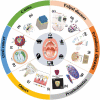
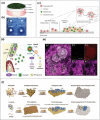


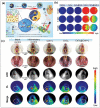
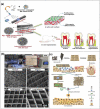
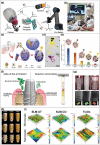
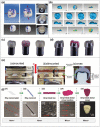

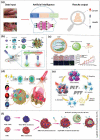

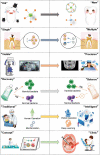
Similar articles
-
Prospects of Advanced Therapy Medicinal Products-Based Therapies in Regenerative Dentistry: Current Status, Comparison with Global Trends in Medicine, and Future Perspectives.J Endod. 2020 Sep;46(9S):S175-S188. doi: 10.1016/j.joen.2020.06.026. J Endod. 2020. PMID: 32950189 Review.
-
Toward the development of a vibrant, super-aged society: The future of medicine and society in Japan.Geriatr Gerontol Int. 2021 Aug;21(8):601-613. doi: 10.1111/ggi.14201. Epub 2021 Jul 1. Geriatr Gerontol Int. 2021. PMID: 34212470
-
Right care, first time: a highly personalised and measurement-based care model to manage youth mental health.Med J Aust. 2019 Nov;211 Suppl 9:S3-S46. doi: 10.5694/mja2.50383. Med J Aust. 2019. PMID: 31679171
-
Engineering Electrospun Nanofibers for the Treatment of Oral Diseases.Front Chem. 2021 Dec 20;9:797523. doi: 10.3389/fchem.2021.797523. eCollection 2021. Front Chem. 2021. PMID: 34988063 Free PMC article. Review.
-
Translating Dental, Oral, and Craniofacial Regenerative Medicine Innovations to the Clinic through Interdisciplinary Commercial Translation Architecture.J Dent Res. 2021 Sep;100(10):1039-1046. doi: 10.1177/00220345211009502. Epub 2021 Apr 27. J Dent Res. 2021. PMID: 33906502 Free PMC article.
Cited by
-
Correlations of FCGR2A 131R/H and FCGR3A 158V/F Polymorphisms with the Susceptibility of Peri-implantitis in Chinese Han Population.Mol Biotechnol. 2025 Jun;67(6):2254-2261. doi: 10.1007/s12033-024-01193-8. Epub 2024 May 21. Mol Biotechnol. 2025. PMID: 38771420
-
Thermoplastic Zinc-Infused Polymer for Chairside Socket Seal Abutments Enhances Antimicrobial and Tissue-Integrative Properties.Antibiotics (Basel). 2025 Apr 27;14(5):441. doi: 10.3390/antibiotics14050441. Antibiotics (Basel). 2025. PMID: 40426508 Free PMC article.
-
Herbal remedies for oral and dental health: a comprehensive review of their multifaceted mechanisms including antimicrobial, anti-inflammatory, and antioxidant pathways.Inflammopharmacology. 2025 Mar;33(3):1085-1160. doi: 10.1007/s10787-024-01631-8. Epub 2025 Feb 5. Inflammopharmacology. 2025. PMID: 39907951 Free PMC article. Review.
-
Research Progress on Nanomaterials for Tissue Engineering in Oral Diseases.J Funct Biomater. 2023 Aug 1;14(8):404. doi: 10.3390/jfb14080404. J Funct Biomater. 2023. PMID: 37623649 Free PMC article. Review.
-
Mucoadhesive Polymeric Polyologels Designed for the Treatment of Periodontal and Related Diseases of the Oral Cavity.Polymers (Basel). 2024 Feb 21;16(5):589. doi: 10.3390/polym16050589. Polymers (Basel). 2024. PMID: 38475273 Free PMC article.
References
Publication types
LinkOut - more resources
Full Text Sources
